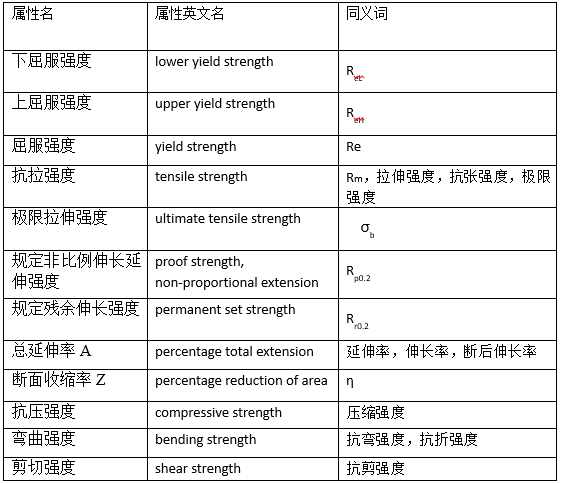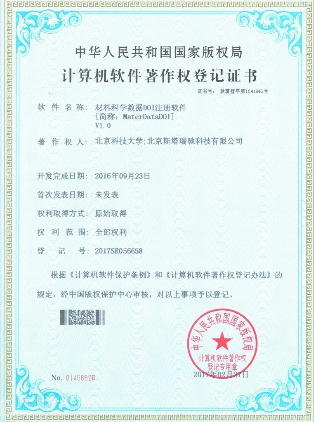Materials Database Technology
Materials Database Technology




Yin Haiqing Professor of the University of Science and Technology Beijing
Jiang Xue Engineer of the University of Science and Technology Beijing
【Chief Members】
Yin Haiqing Professor of the University of Science and Technology Beijing
Jiang Xue Engineer of the University of Science and Technology Beijing
【Research Background】
Material science data serve as an important requisite and basis for new material R&D and industrial development. Such data also provide an important basic strategic resource for the development of science and technology innovation and for socioeconomic development of a country. Material databases, computational material simulation, and experimental material characterization constitute three basic tools needed for the whole process of material R&D. These serve as k ey technologies to accelerate the R&D and application of new materials. They also play an increasingly important role in national security, engineering service safety, and intelligent manufacturing in the big data age. It is necessary to build a mechanism integrating the basic research and testing of materials and the collection, storage, sharing, and intelligent application of service data. This is needed to form the infrastructure and data systems required to support scientific research, experimental development, and engineering applications of materials. This is expected to integrate fragmented material data resources, to enhance abilities for original innovation, and to significantly accelerate processes related to R&D and the application of new materials.
【Research Objectives】
The team is committed to fulfilling China’s urgent need to resolve material bottlenecks and to solving key material problems in major engineering projects. They aim to build a data resource storage platform and a materials informatics knowledge system by integrating and aggregating material data resources. This should achieve data-driven material innovation design and maximize the prominent role of material big data in innovation research and production of materials. Attention will be given to the construction of material databases that meet the requirements of reliability, scientificity, integrity, traceability, and safety, as well as the requirements of material design, data analysis, and machine learning. The latter will include basic material databases and thematic databases of 10-15 materials. Moreover, the team aims to establish a series of standard specifications of material data that fully cover all aspects of material database construction and application. It will also establish stable human resources dedicated to database construction, maintenance, and updating, to form gradually, a complete, feasible assessment mechanism and incentive mechanism. The aim is to develop one or two relevant teaching courses and to train talented individuals with the needed capabilities in material data integration, application, data mining, and machine learning. The result should be a sustainable material data ecosystem integrating database construction with material development and application.
【Main research areas】
1. Basic and thematic databases of materials genome engineering (MGE)
2. Material informatics knowledge system
3. Material data system and standard specifications
4. Data-driven material design and R&D applications
【Significant Research Progress】
1. Basic and thematic databases of MGE
Based on the team’s long-term data integration and management experience with the China’s Materials Scientific Data Sharing Network, more than 10 material databases including material foundation, metal materials, and inorganic non-metals have been collected, and a series of standard specifications on material data have been drafted. These fully cover all the aspects of material database construction and applications. Based on manual reading and pixel value conversion methods, the data on material code and name, material composition, raw material information, property information, experimental conditions and other data are recorded, with the data quality controlled and assessed from the three aspects of data source, data reviewer, and data error rate. In the meantime, the granularity and normativeness of data collection are continuously refined, and a “Material Property Data Dictionary” containing more than 730 entries has been established, which maps property synonyms to English symbols. An intellectual property protection mechanism has been established for material data, and a registration software for unique object identifiers of material data has been developed with propriety intellectual property rights. The team has conducted research on data-driven material design and R&D applications, and constructed several material structure and property prediction models, which have been used successfully to guide the production processes of high-end bar and wire products, aluminum alloys, and other relevant products in enterprises. Moreover, the team has, for the first time in China, translated a monograph of materials informatics into Chinese, and opened a graduate course in materials informatics.



Exemplified illustration of the Material Property Data Dictionary
Registration software for unique object identifiers of material data
2. Materials informatics knowledge system
An exploratory study of the materials informatics knowledge system was carried out. The architecture of the materials informatics knowledge system was established. The domain rules (knowledge) generated from material data are described by ontology technology (RDF/OWL) and can be used in describing entry association and recommending data in database systems, compensating for the lack of domain knowledge in the construction and application process of traditional databases.


Architecture of materials informatics knowledge system Material ontology
